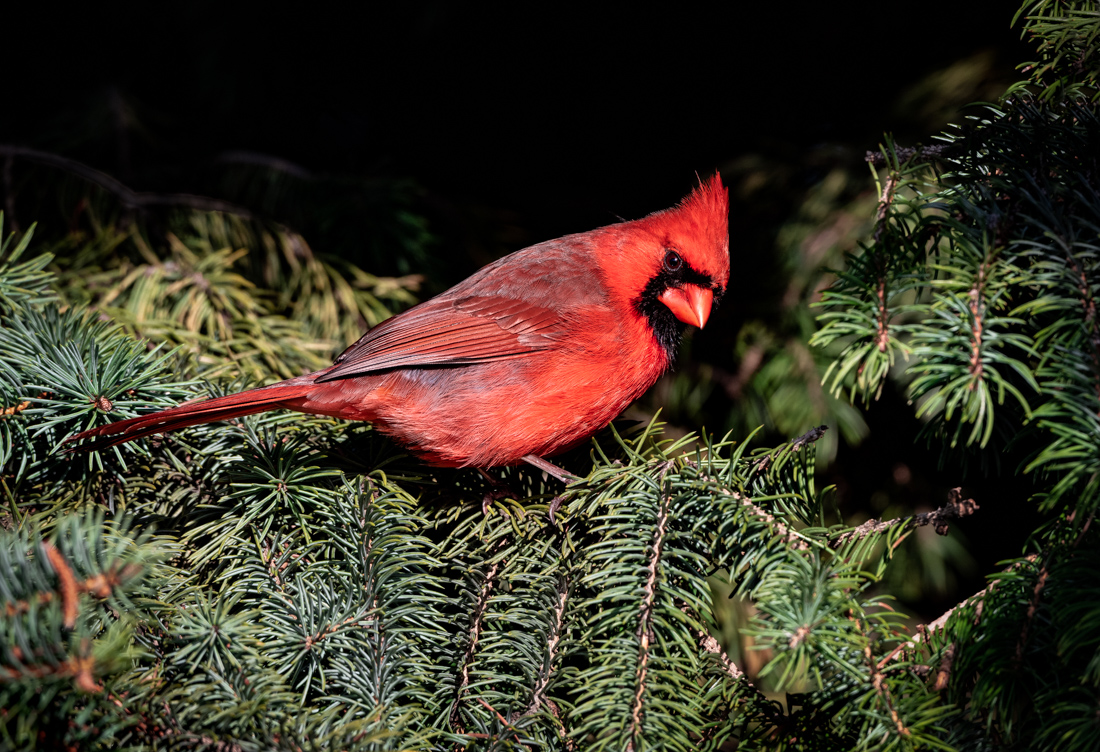
Because of its bright red feathers, black mask, and jaunty crest, the northern cardinal is one of the most easily recognized, most popular songbirds in North America. There is much more to love about these birds than their colorful plumage, however, and learning fun trivia about cardinals can inspire birders and photographers alike to appreciate even more about these widespread birds.
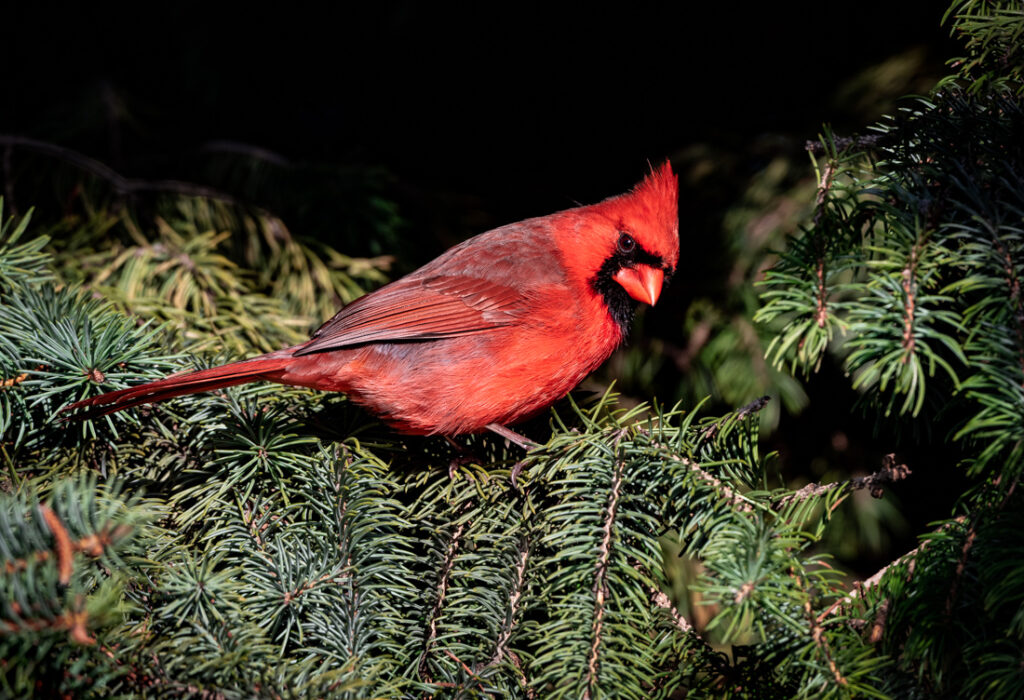
The northern cardinal (Cardinalis cardinalis) is a member of the Cardinalidae bird family, which also includes many other colorful birds, such as grosbeaks, chats, tanagers, and buntings. Because of their plumage, northern cardinals are often called redbirds, and Virginia nightingale and common cardinal are other names this familiar bird is known by. Cardinals got their names because the birds reminded European settlers of the red vestments and tall, pointed hats worn by Roman Catholic officials and other church leaders.
Another influence on the cardinal’s name is its range – northern cardinals are called “northern” because of all the world’s cardinal species, they have the northernmost range. While these birds do not migrate, their range has slowly been expanding in recent years, in part because of climate change and changing habitats, but also because supplemental feeders give these birds a reliable food source to take advantage of even when natural foods are scarce in winter.
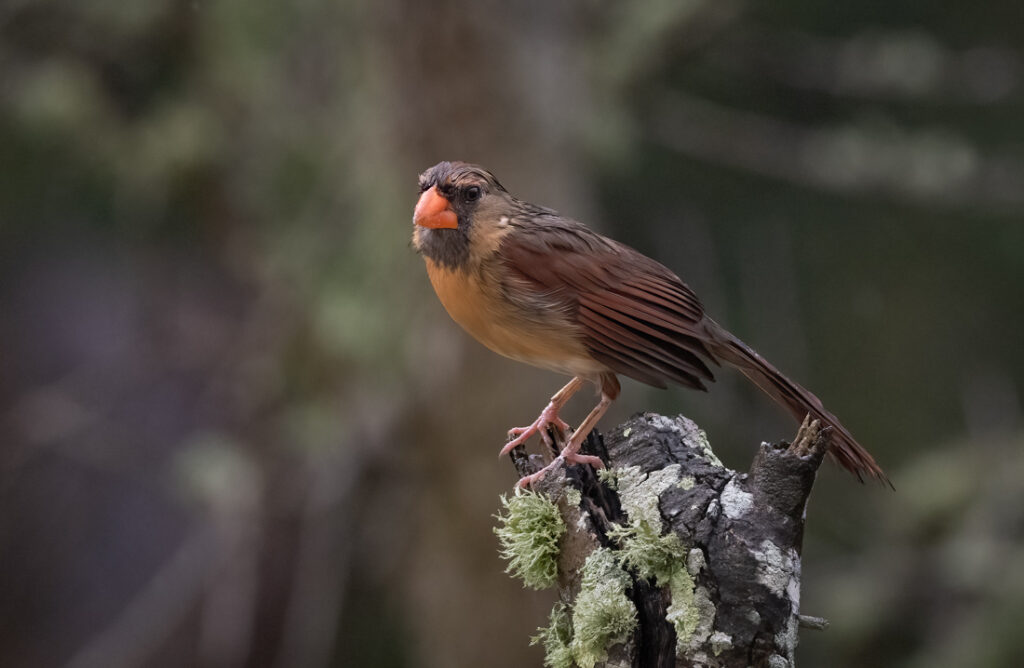
Capturing the cardinal’s red color can be a challenge, and shadowy, dappled light is often best to showcase the red color without washing out feather details that could be lost in bright sunlight. Photographers should also not miss the subtle beauty of female northern cardinals, which though they lack the overall bold red of the males, have a soft, fawn-like tan coloration with a red blush on the wings, tail, and breast. Photographing female cardinals in brighter light will help highlight their more subtle coloration.
Northern cardinals aren’t just red or tan, however. Because of rare genetic mutations, some northern cardinals can be bright lemony yellow, a condition called xanthochroism. Others may be leucistic, or nearly pure white. Both of these conditions are extremely rare, but can be a treat for photographers to capture.
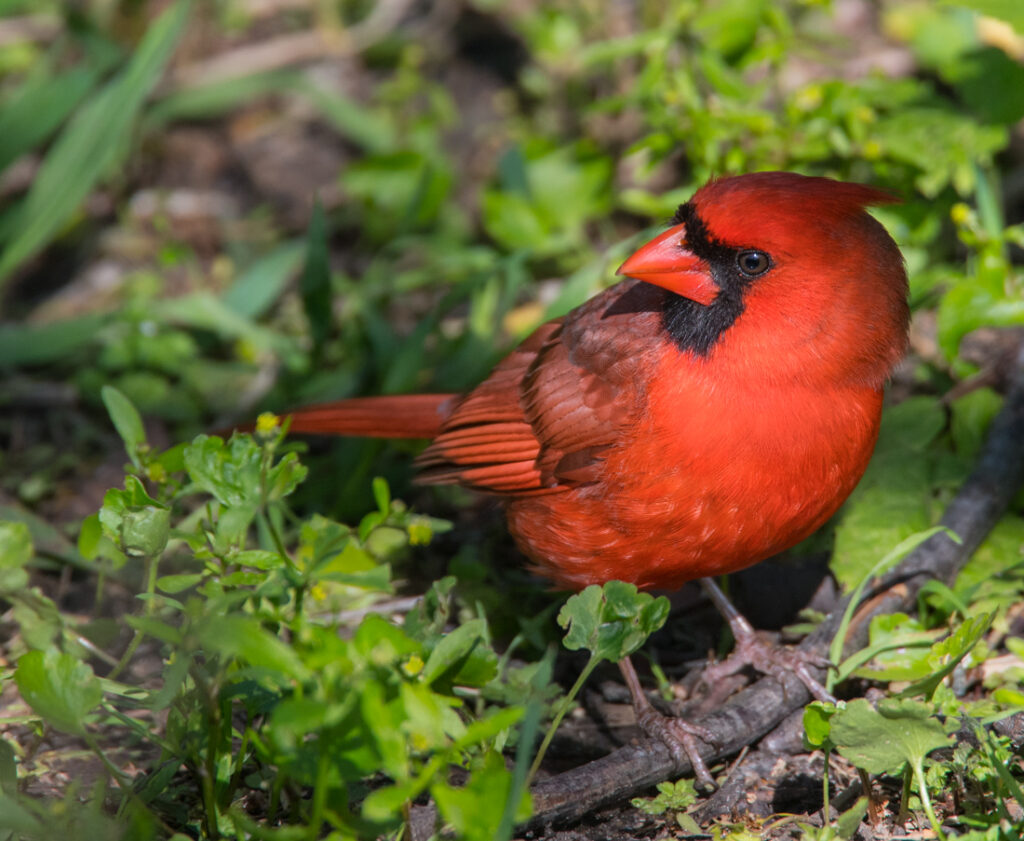
Another unique condition northern cardinals go through that can be fun to capture is their full head molt, when these songbirds lose all the feathers on their head at once. This turns a beautiful songbird into what looks like a miniature vulture with the gray-black skin on its head exposed and its large, orange bill looking even more exaggerated and prominent. This is a natural part of a cardinal’s molting process in late summer, however, and the head feathers will soon regrow to their former glory.
The northern cardinal is so popular, these birds have been honored as the official state birds of seven states – Illinois, Indiana, Kentucky, North Carolina, Ohio, Virginia, and West Virginia. Cardinals are also popular mascots for many schools, sports teams, and businesses. Photographing these birds in their home states or even on favorite campuses can be a special experience.
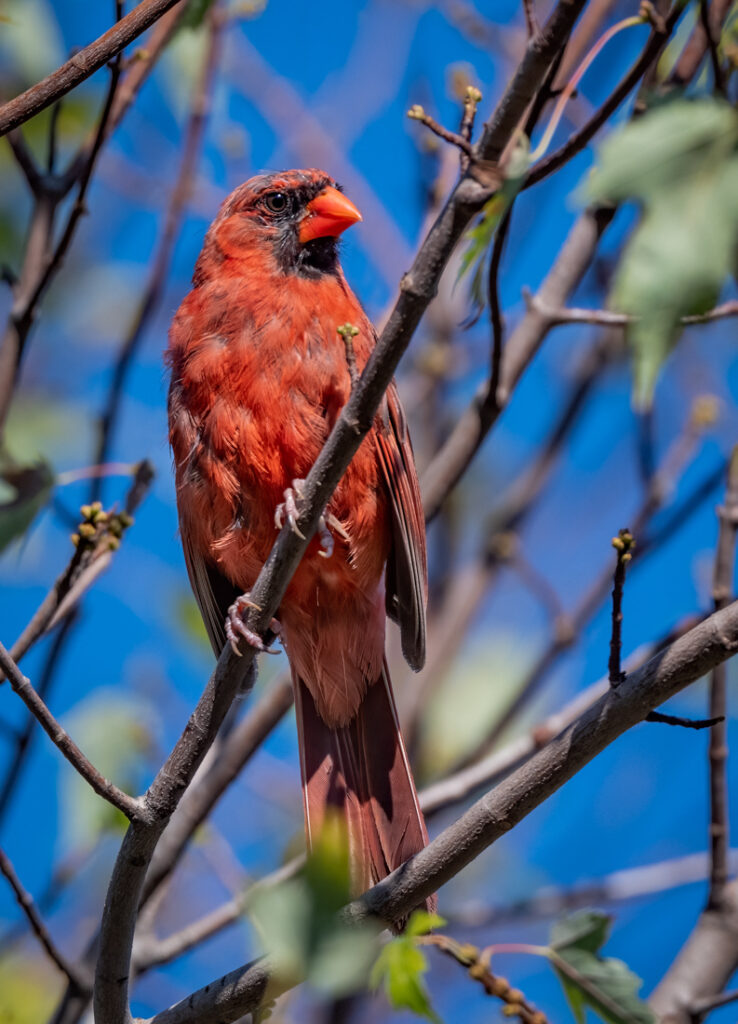
To capture more special cardinal behavior, take time to watch these birds as they eat. Northern cardinals eat mostly grain and seeds, with some small fruits, berries, and insects rounding out their diet. At feeders, they will enjoy sunflower seeds and suet, and setting up a feeding station can give both birders and photographers opportunities to see and capture these birds from different angles and at different times of day, when different light can highlight new details of the birds.
An especially endearing feeding behavior to capture is when a mated pair of cardinals share a morsel with a gentle kiss-like touch. This is part of these birds’ bonding rituals, and because cardinals may mate for life and pairs stay together throughout the year, this mutual feeding might be seen at any time. It is especially common during spring when pair bonds are renewed before the mating season, and thus gentle green backgrounds and tree blossoms make spectacular backdrops for charming photos.
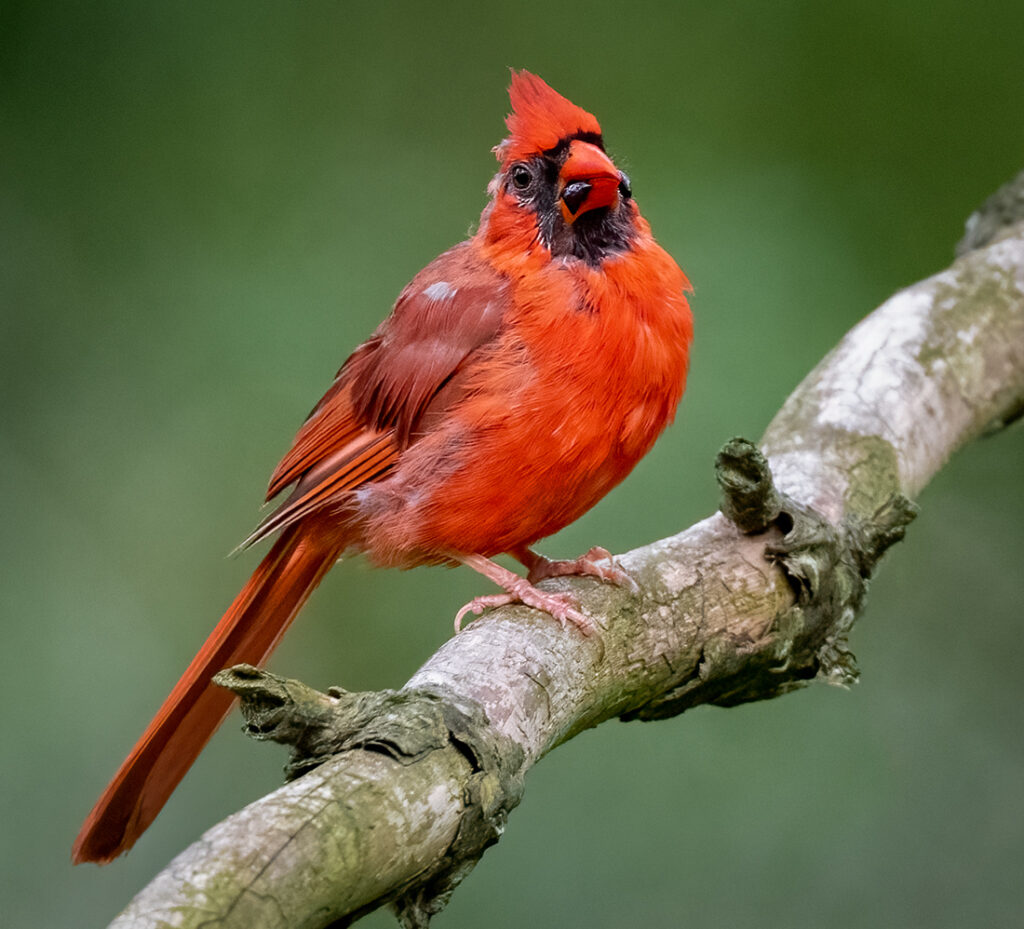
While cardinals are common birds today and even beginning photographers can find ample opportunities to take great cardinal photos, in the 1800s these birds were often kept as cage pets and poaching was a troublesome trend affecting wild birds. Fortunately, northern cardinals are now protected and their abundant populations can be found in many areas, from forests and forest edges to suburban yards and urban parks. With so many diverse locations to find northern cardinals, every photographer can take the time to get to know these birds and enjoy all that makes them amazing and unique. An added bonus to experiencing these birds in person is their beautiful song. You are able to listen to these on each of our website.


